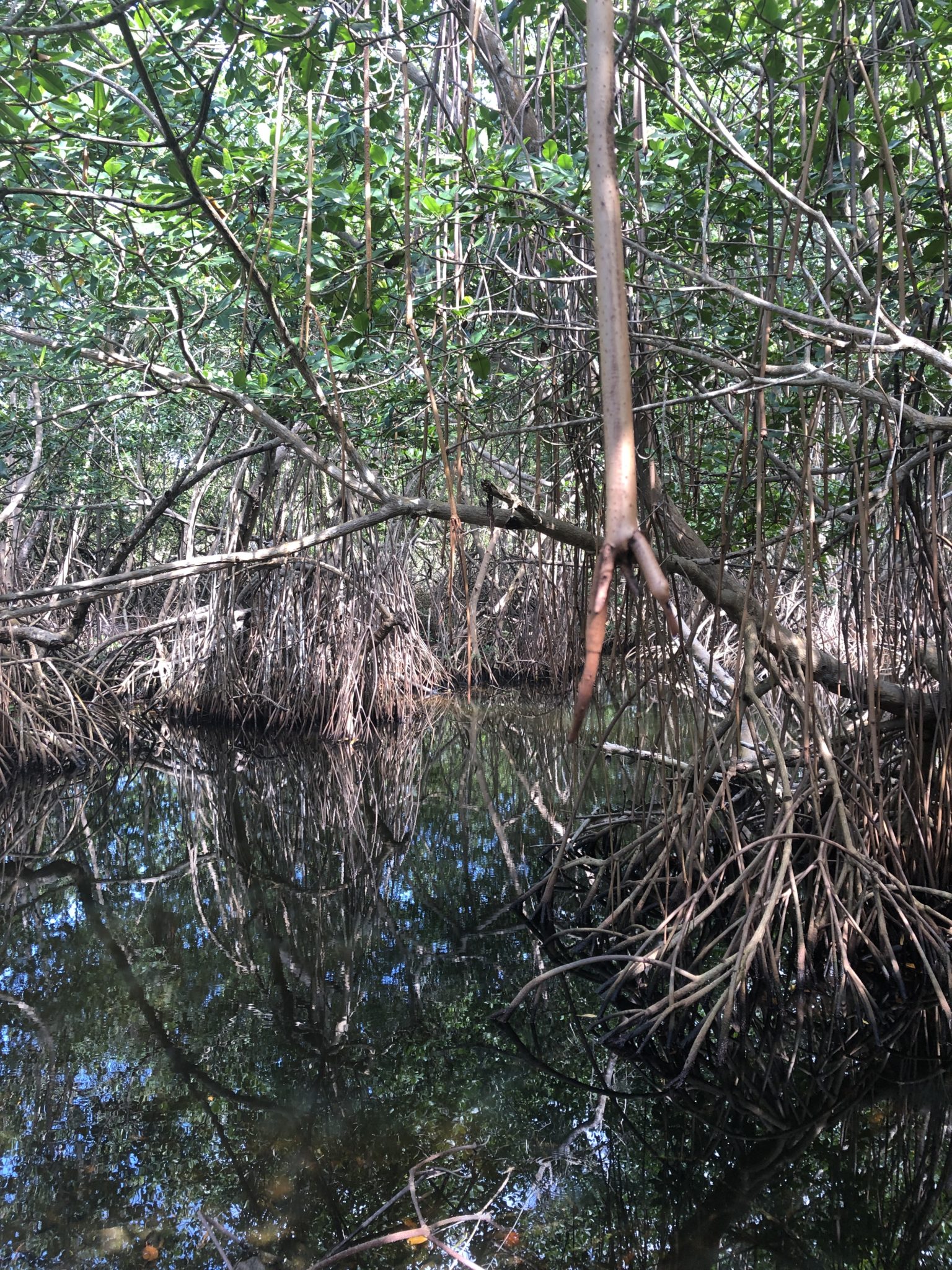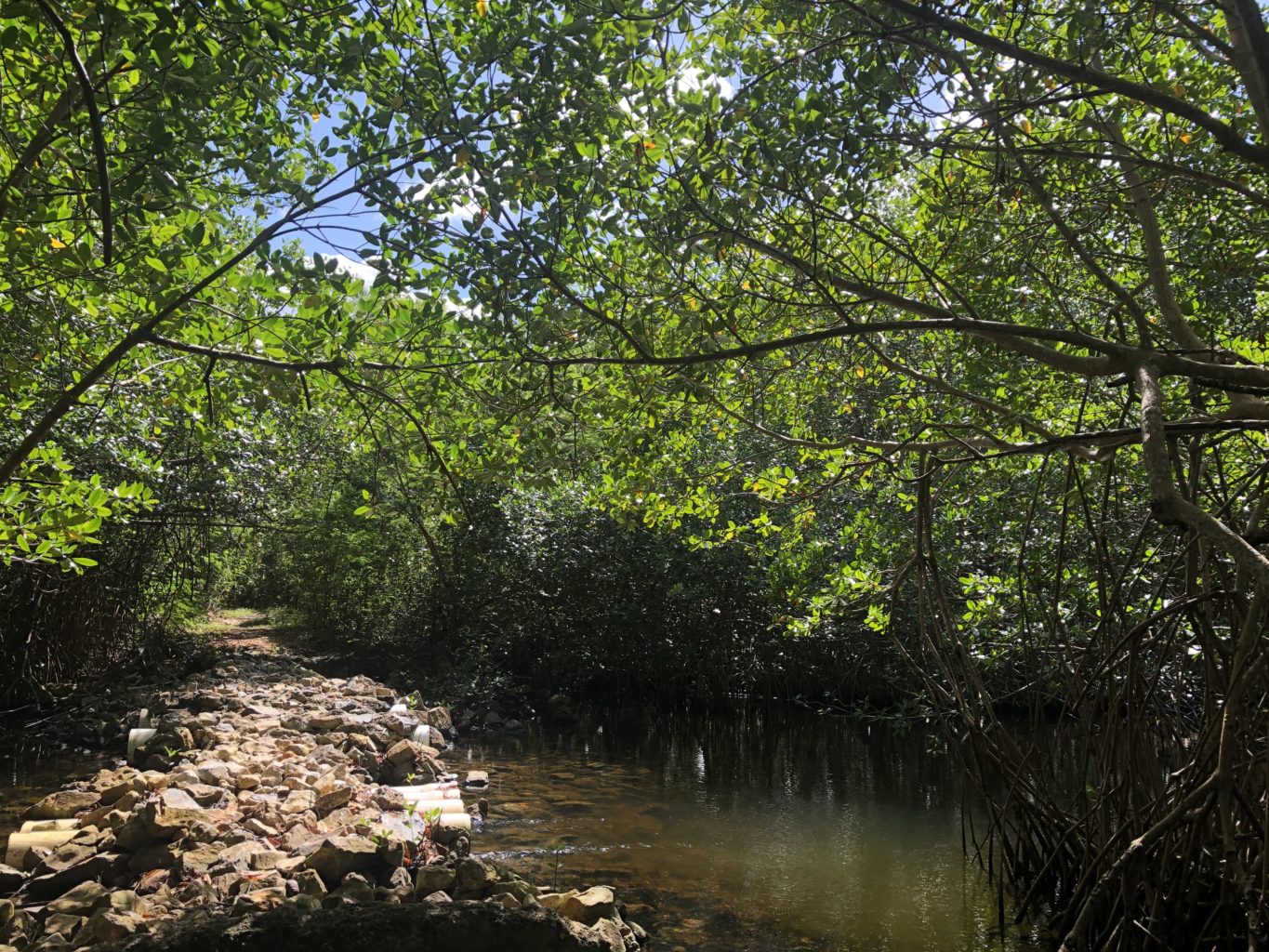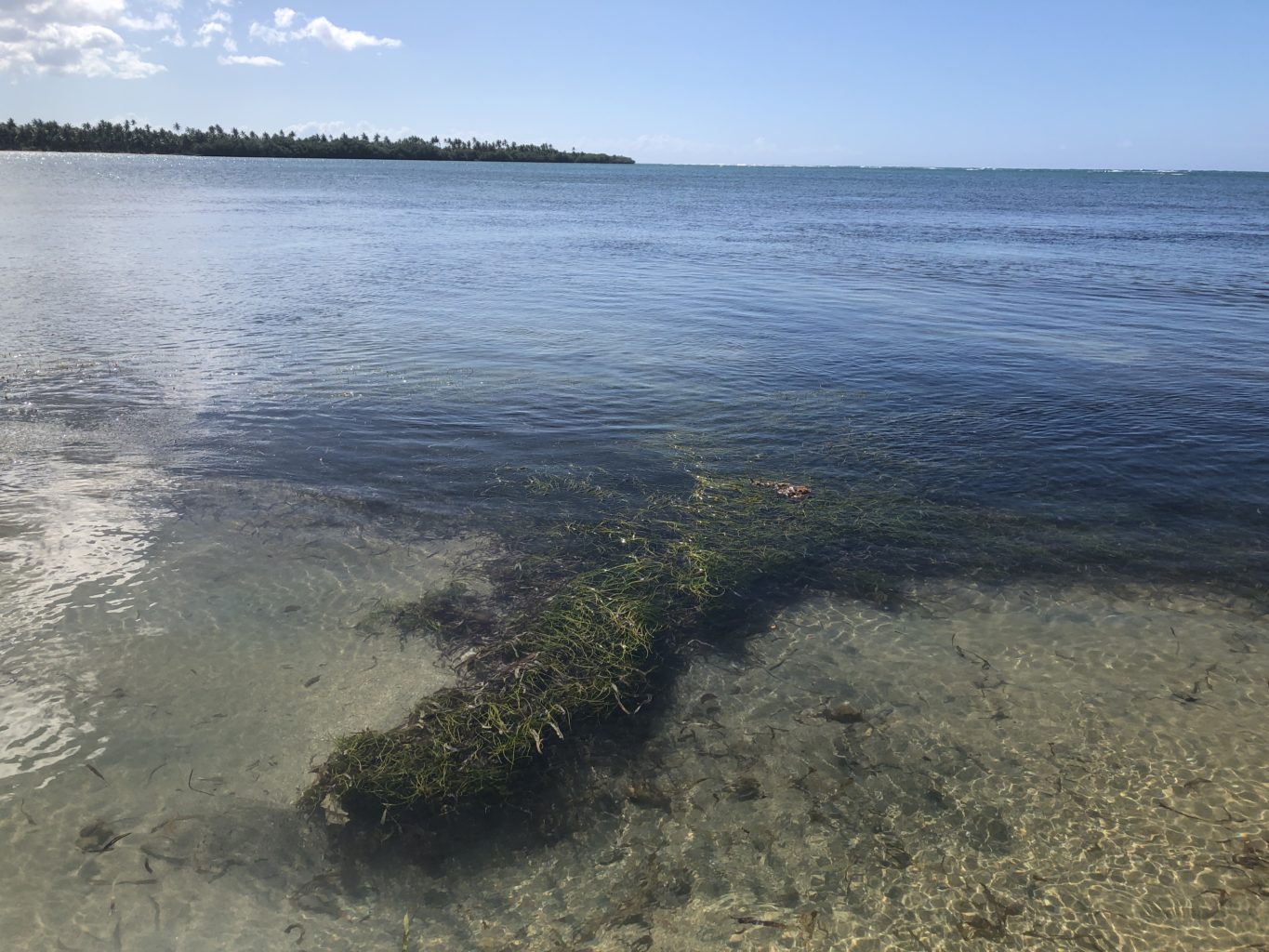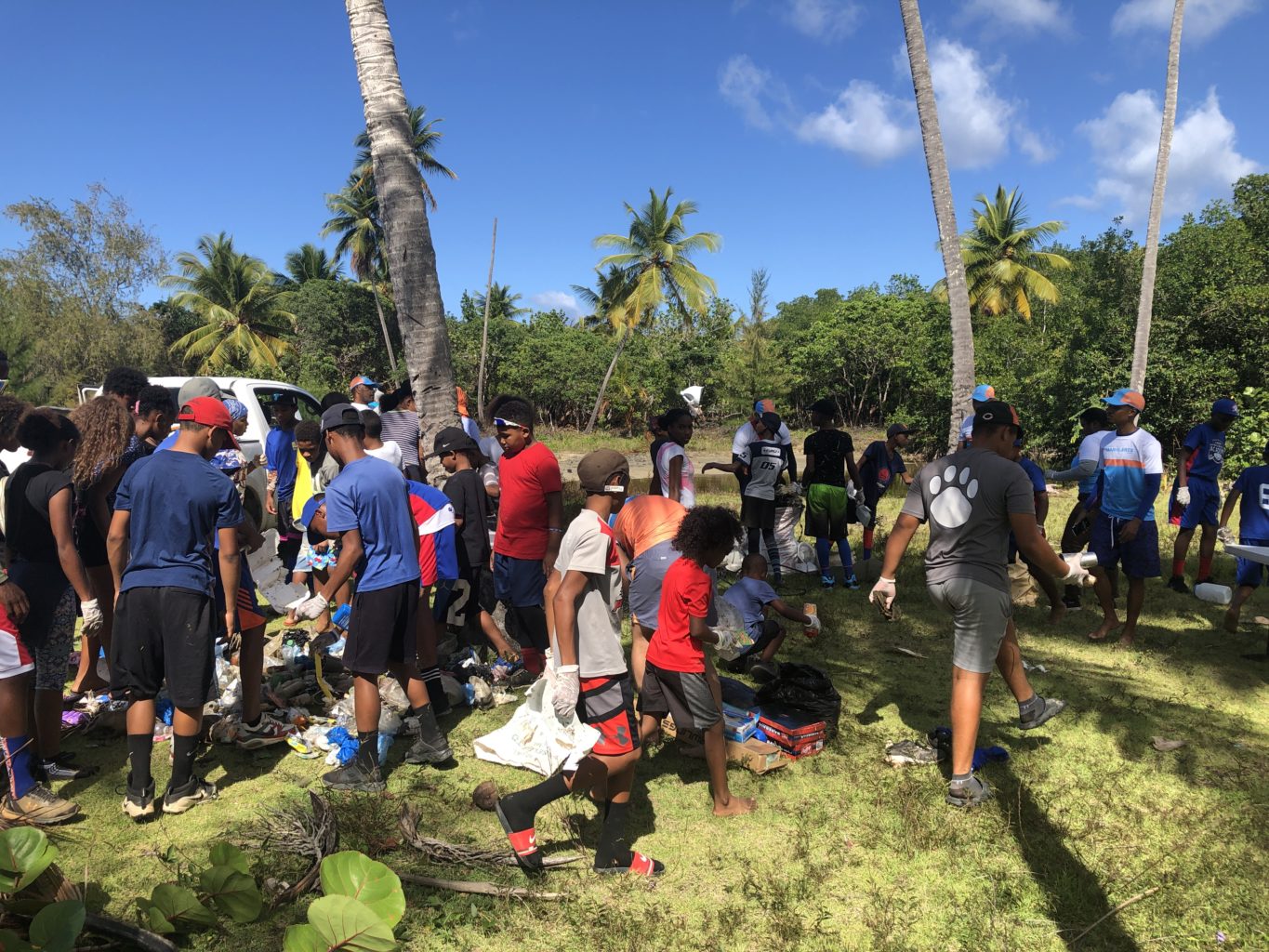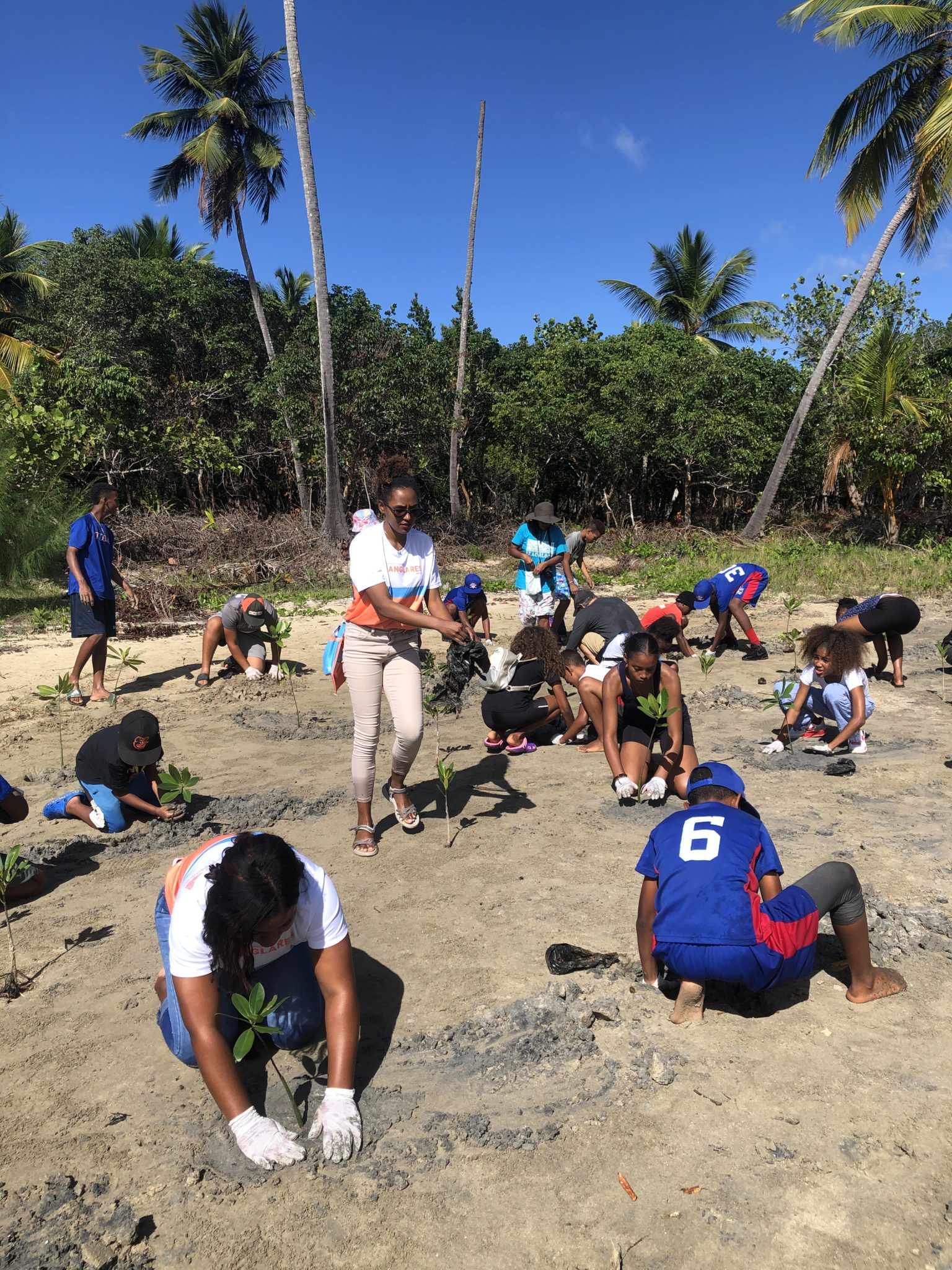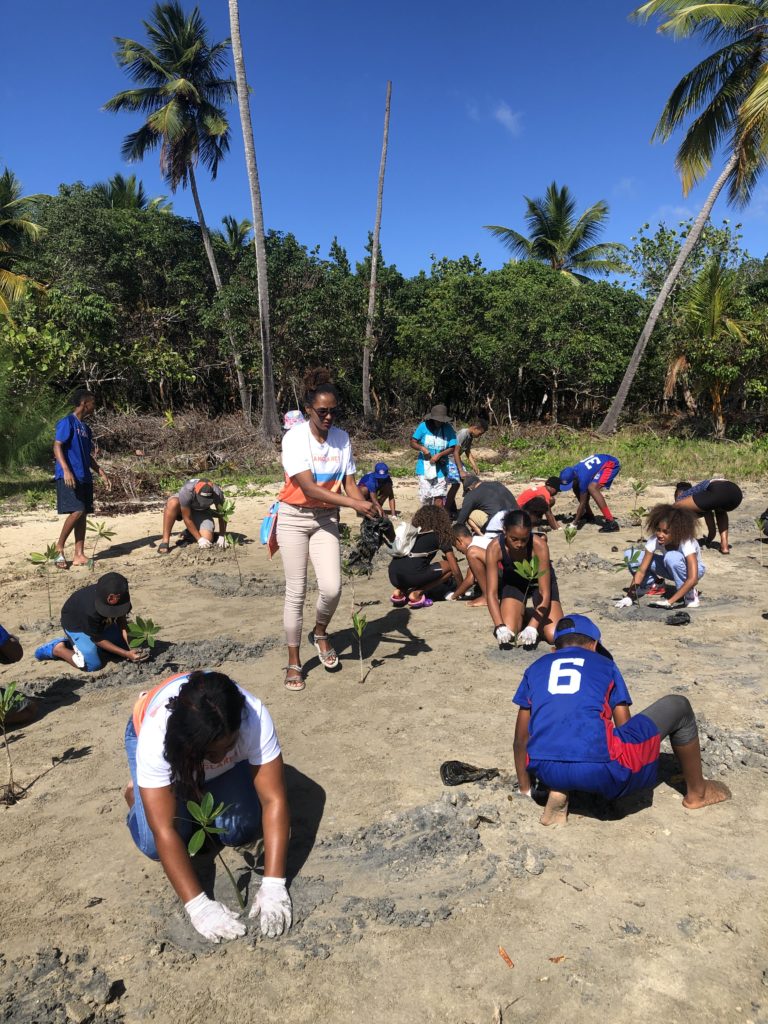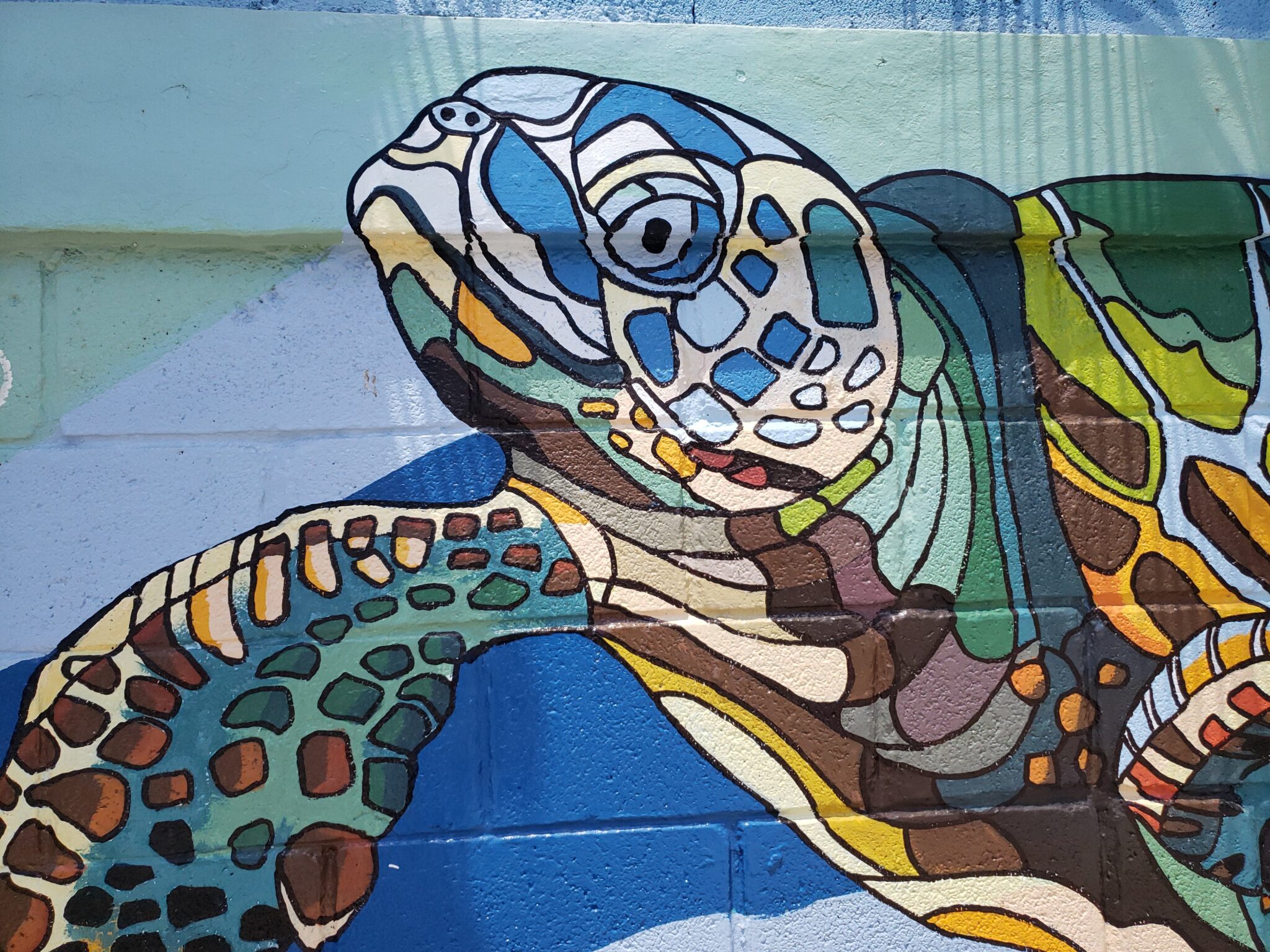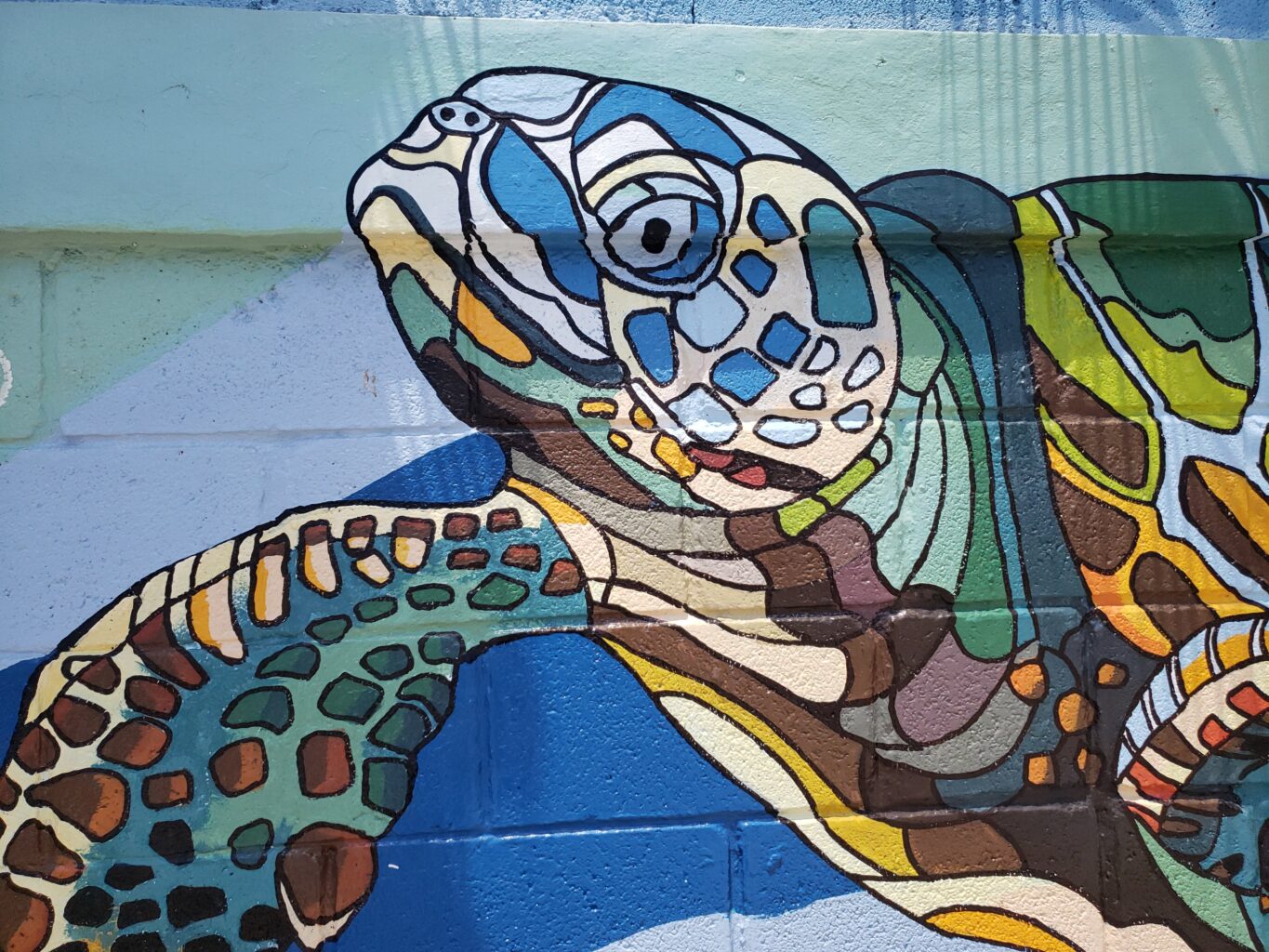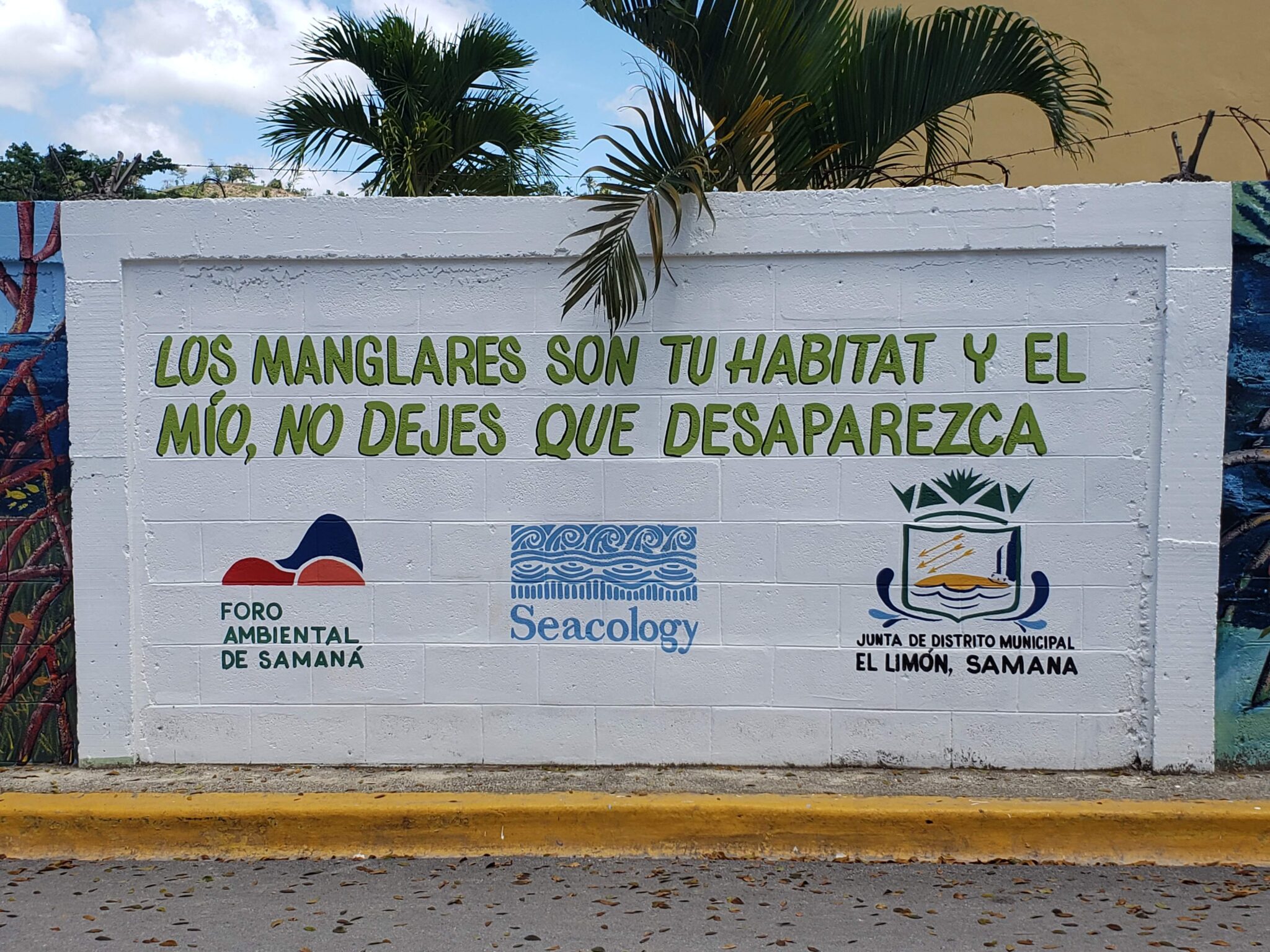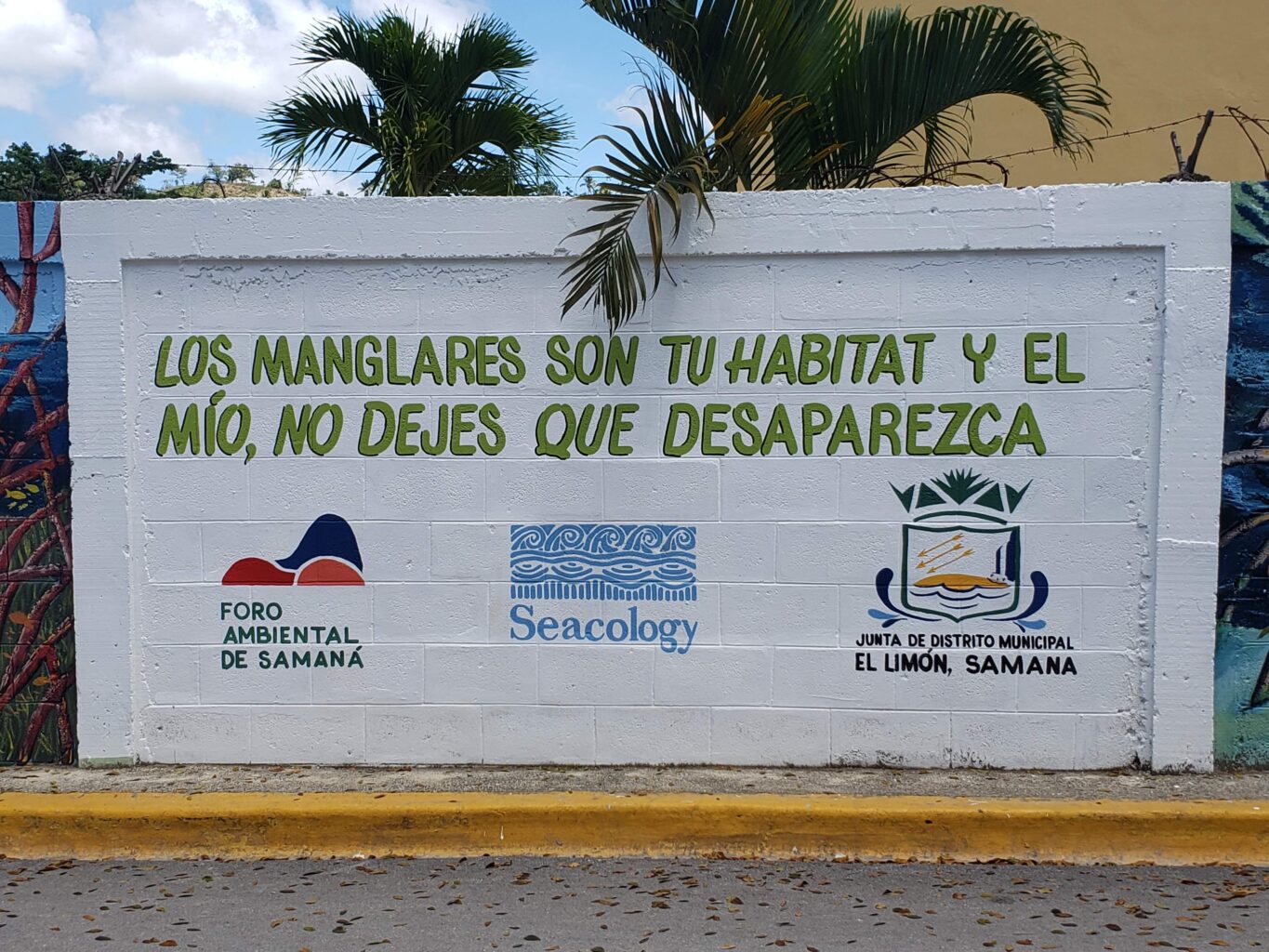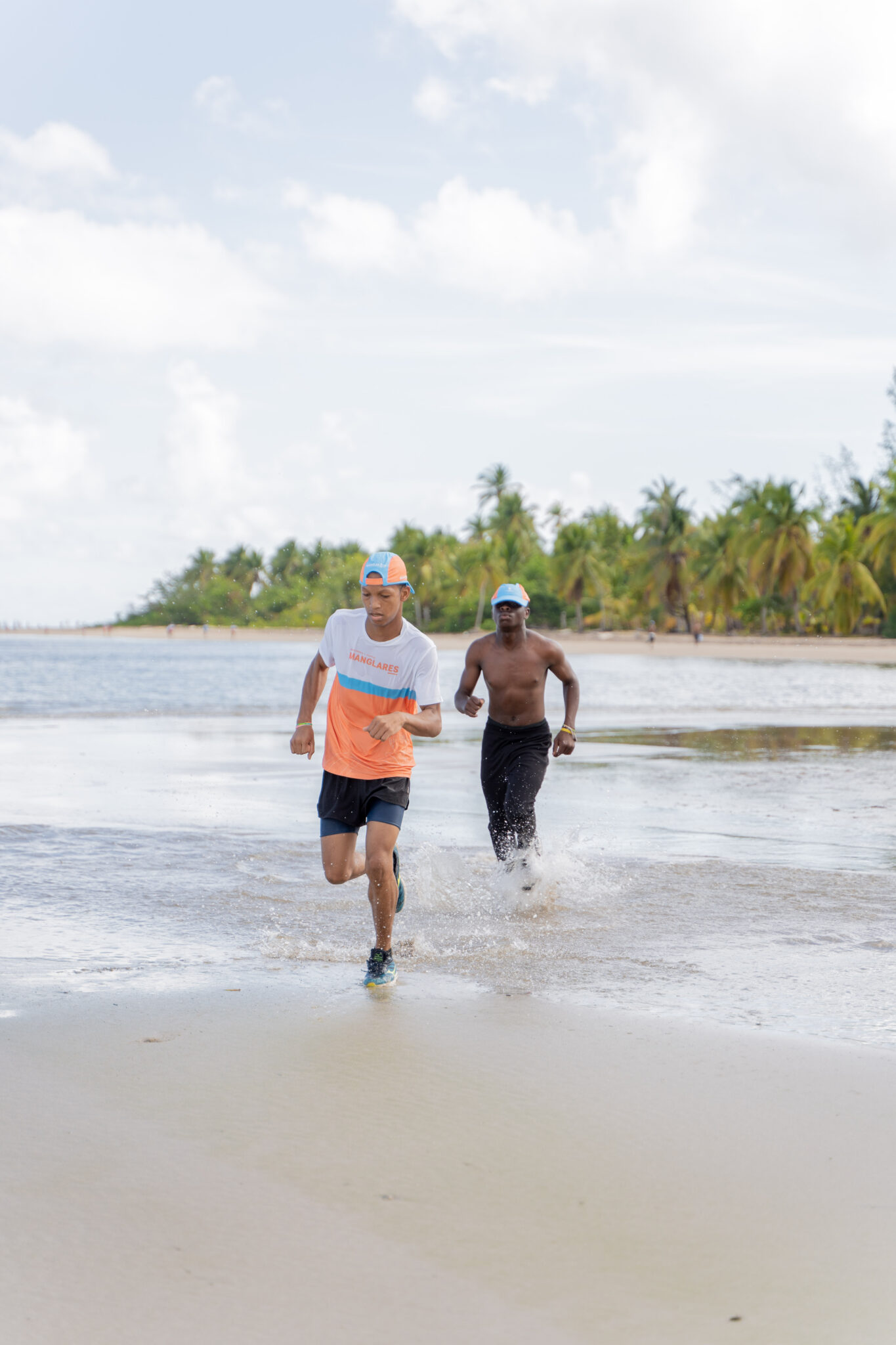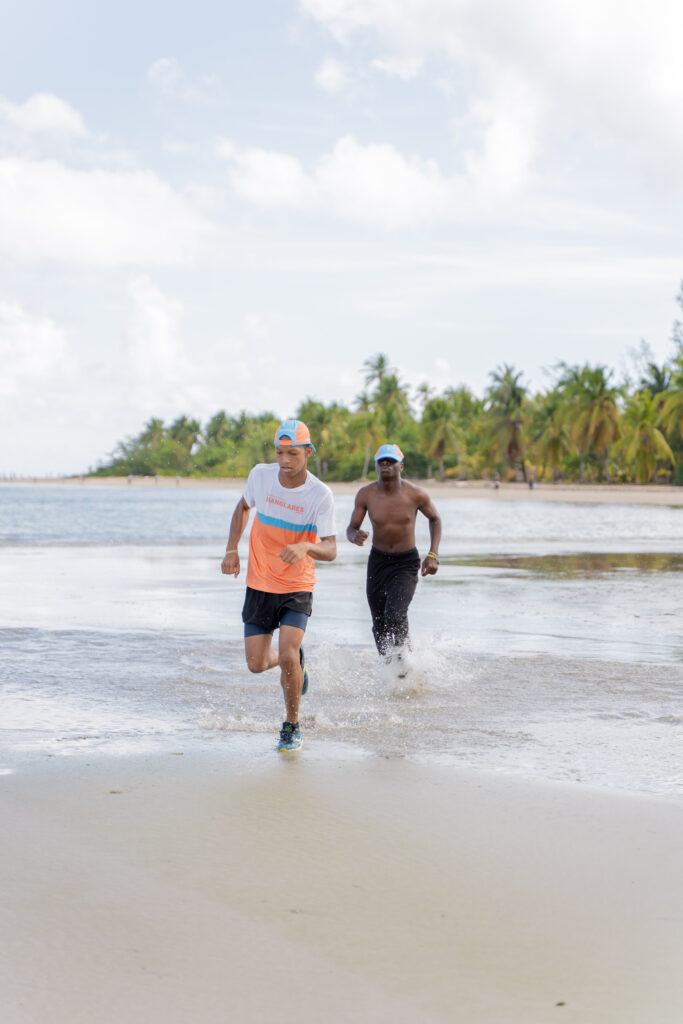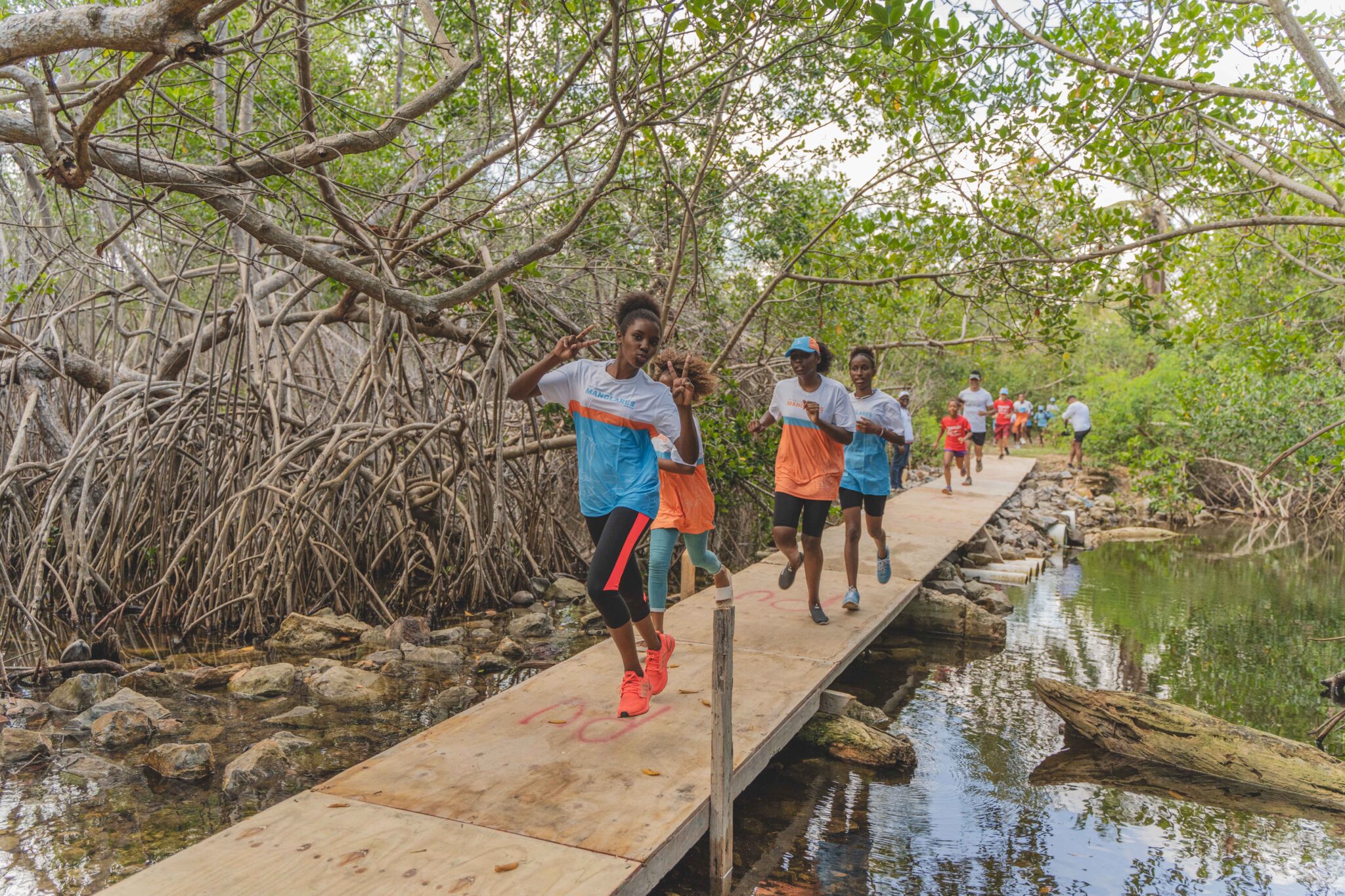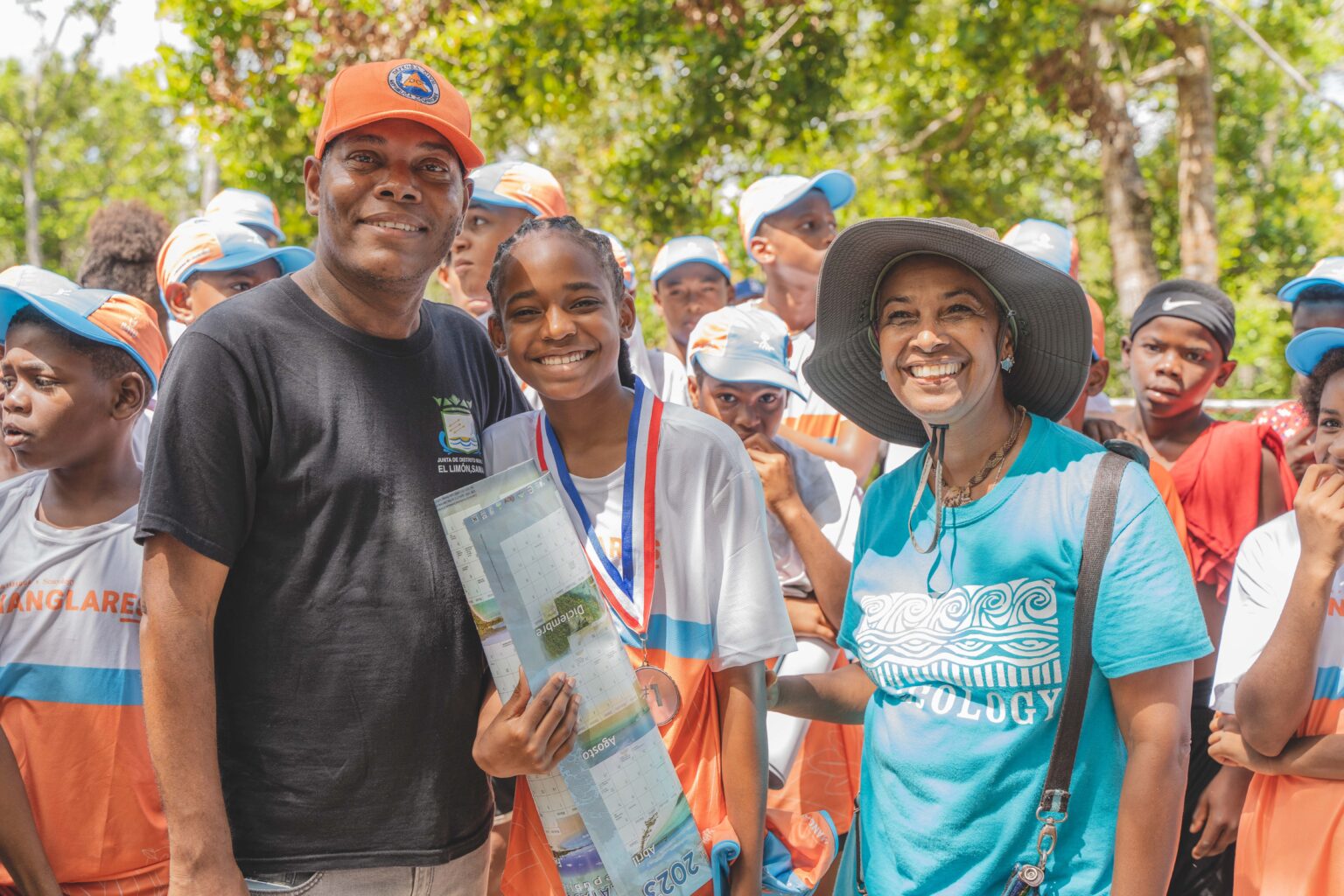This project protects an area of mangrove trees, at the mouth of the El Arroyo River on the Samaná Peninsula, that is small but critical to the area’s environmental health. These mangroves mitigate erosion and flooding, and serve as a natural barrier and filter between fresh and sea water. The area is home to all four of the DR’s mangrove species. A young and growing forest, it sequesters even more carbon than mature forests. It is also located between two of the most beautiful beaches of the Samaná Peninsula, the seasonal home of nesting hawksbill turtles. Vast seagrass beds lie offshore.
The mangroves are threatened by farmers who want to clear trees to grow coconuts and fishers who want to burn trees to make catching crabs easier. But by far the most troubling danger is the potential development of tourism infrastructure.
To highlight the importance of the mangrove forest, nearby communities and local environmental groups have been drawing up a management plan. They plan to build trails so that locals and visitors can explore the area safely; the trails will also provide make patrolling it easier. New signs will teach visitors about the importance of protecting coastal ecosystems. In addition, the riverbank area will be restored. Workshops on mangroves and coastal ecosystems will engage district officials, landowners, fishers and other resource users.
Engaging youth is a key part of the program. In a new outdoor “coastal classroom,” schoolchildren learn about mangroves. They can also enter a mangrove ecosystem song and poetry contest, in the genre of their choice – rap, bachata (a popular form of music that originated in the DR), with or without instruments. The songs will be shared on social media to increase their reach. A professional artist will work with children, teens, and young adults to create mangrove-themed public murals.











